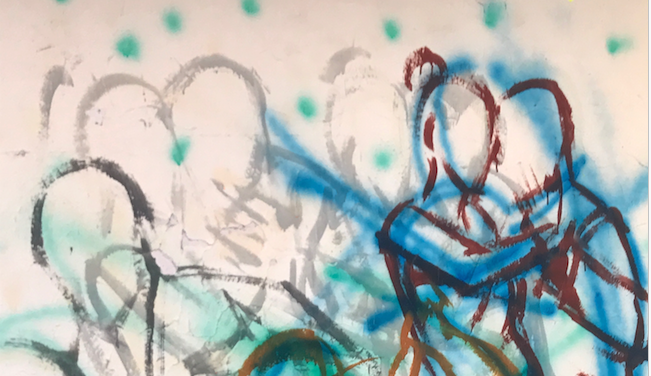Today, as I was sitting with a perfectly straight back on the slightly uncomfortable chair in my therapist’s office, I equated finding my voice to the highest expression of personal power. For an inherently shy kid with a foreign accent living in a country different than my native one, my voice had always been a part of my self-expression that I had not necessarily learned to trust. Stumbling on Argentine tango was what finally started that kid on the process of coming out of her shell. Now I recognize that what I was mainly looking for when I decided to learn how to dance tango was a creative way of expressing my voice.
With its improvisational nature and lack of one set technique, Argentine tango primarily relies on the following and leading dynamic of the dancing couple to create its magic. It is a dynamic that is very much built on communication and on each partner trusting their own inner voice so they can open up truthfully and vulnerably to the intimate connection with the other. Through this connection Argentine tango poses a challenge of mindfulness more than a challenge of physical strength and endurance to each dancer. It dares the dancer to learn how by being fully absorbed in the moment, they can allow their voice to form on the inside, to then hear its words and to channel externally its message in a clear but respectful way to their dancing partner. There is a graceful power to be found when we raise to the challenge of Argentine tango.
As a beginner tango dancer, what I personally struggled the most with, more than the technique, the musicality or the moves, was finding and expressing that voice. Without embracing its power, I initially felt lost in the partnership and on the dance floor. I never trusted my balance, allowing my partners and the flow of the movement to throw me off my axis and to make my body waiver in an effort to honor somebody else’s voice while ignoring my own. I became tense at the smallest error, anticipating moves that did not exist and messing up cues that were clearly communicated. I limited my joy and fun by not embellishing enough with my feet in fear that my own creative expression, my own voice, would get in the way of the leader and their vision.
The power of my voice grew with my understanding of the essence of Argentine tango – two bodies with one heart moving together. Tango taught me that slowing down, being comfortable with the need to wait when where we go next in the dance is unclear and being at peace in the moment of each tango step I was led into free up space to tune into my body and start hearing its voice. As that voice grew and as I became able to transmit more and more of its message via the dance to my tango partners, I became better at maintaining my own axis because I understood the boundaries of my own body better. I found the confidence to play with the music as I hear it and on my own terms. I found the gentle power of the follower role to influence the dance – to slow down, speed up or even completely change the leader’s musicality or movement to make them more in line with my own interpretation of the dance or with my own level of comfortability in that moment. And as I relied more and more on the power of my voice when dancing tango, I started using more and more my voice in my day-to-day and in my interactions in all other areas of my life.
Today, on March 8th which marks International Women’s Day, I want to offer my story as a reminder to all of us humans out there that our voice is our superpower. Be it through writing or dance or music or cooking or sports or therapy or any other form of expression, cultivating the respectful, kind but firm power of our voice is what will make us our own personal superhero. And as all superheroes do, let us use our voices to be the loving support others need as they embark on this journey of self-discovery on their own terms.


